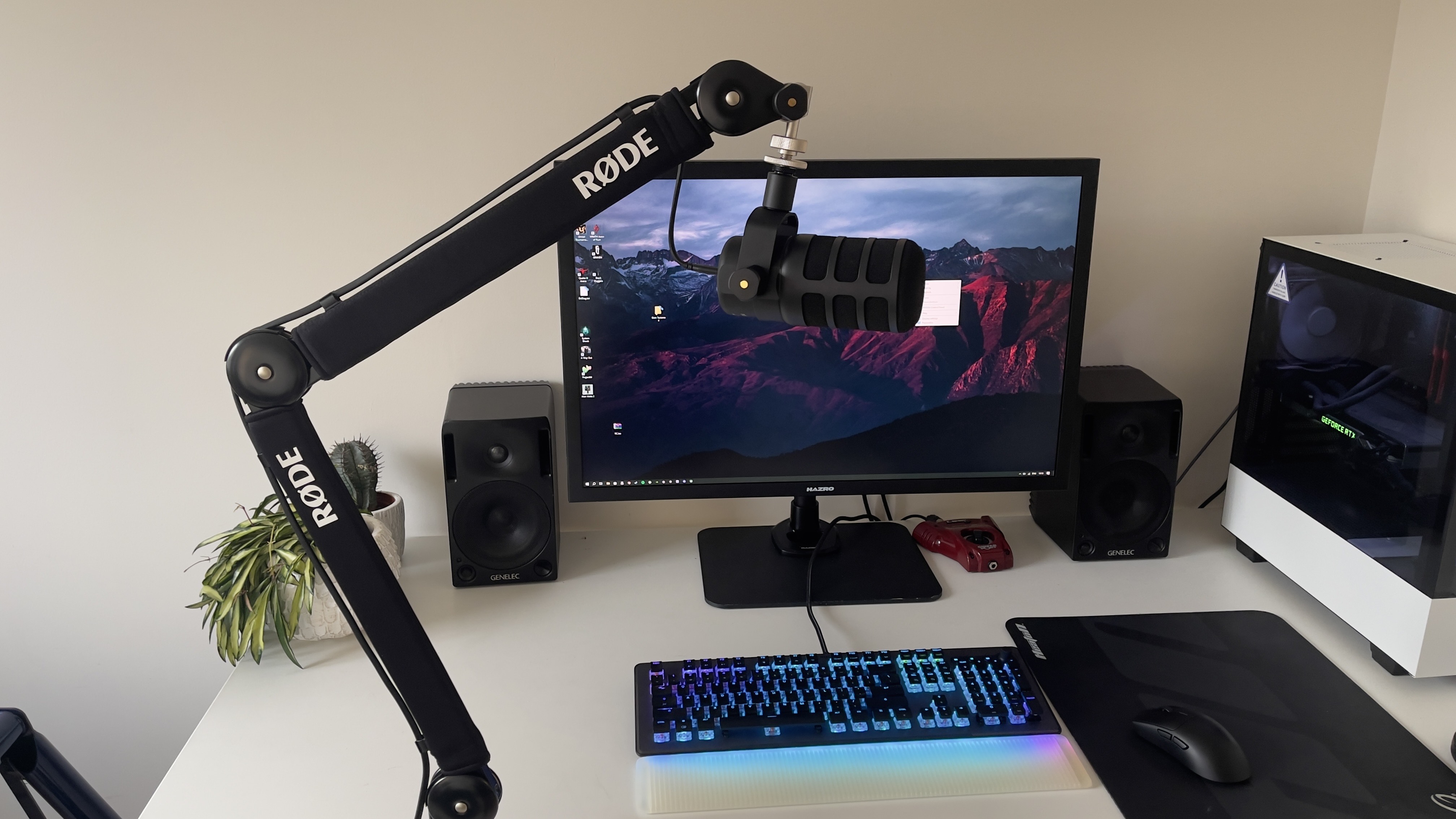TechRadar Verdict
Studio-quality construction and a decent out-of-the-box sound are the strongest assets of this multi-connection spoken word mic, but unfortunately the added USB-C input pushes the price slightly too high for this otherwise beautifully engineered Rode model to be a best-in-class contender.
Pros
- +
Reassuringly weighty
- +
XLR or USB-C inputs
- +
Mic monitoring
- +
Suitable for vocals or instruments
Cons
- -
A bit mid-heavy
- -
No stand supplied
- -
A big price jump from the XLR model
Why you can trust TechRadar
Rode PodMic USB: One-minute review
You can see the rationale here: Rode’s XLR-based PodMic has been a staple of spoken-word recordings for half a decade now, delivering incredible value microphones for streaming for under $100 / £100. But not everyone has an audio interface capable of running XLR inputs, particularly not those with an eye for low-cost setups who might be drawn to the PodMic in the first place. So why not release a model with a USB-C input too?
On paper that sounds great. It means you can connect the PodMic USB directly to your PC or Mac and just start recording into a DAW. No fuss, no added audio interface expense. And don’t get me wrong, the setup really is that easy here.
It sounds pretty good right out of the box too, through either connection type. The sound characteristics seem to favor the mid-range more than the highs, and while I personally prefer a more whispery, pronounced high end for spoken word recordings, ultimately that comes down to personal preference.
However, what's less subjective is the topic of price. Manufacturing a USB microphone with two connections has pushed the price up to $199.99 / £199.99, double that of the original XLR-only PodMic. And that’s a problem, because a big part of the reason everyone loved the PodMic was its price, and how favorably it compared to rival mics in that same range.
There’s a flaw in this proposition, then, but it doesn’t mean you won’t still enjoy its considerable benefits if you buy one. The construction quality is absolutely fantastic, typical of a storied studio mainstay like Rode, and the mic monitoring input is a great nice-to-have. Throwing in a stand might have sweetened the deal a little though, and considering the price it’s disappointing that this mic can’t be used to record USB and XLR tracks simultaneously.
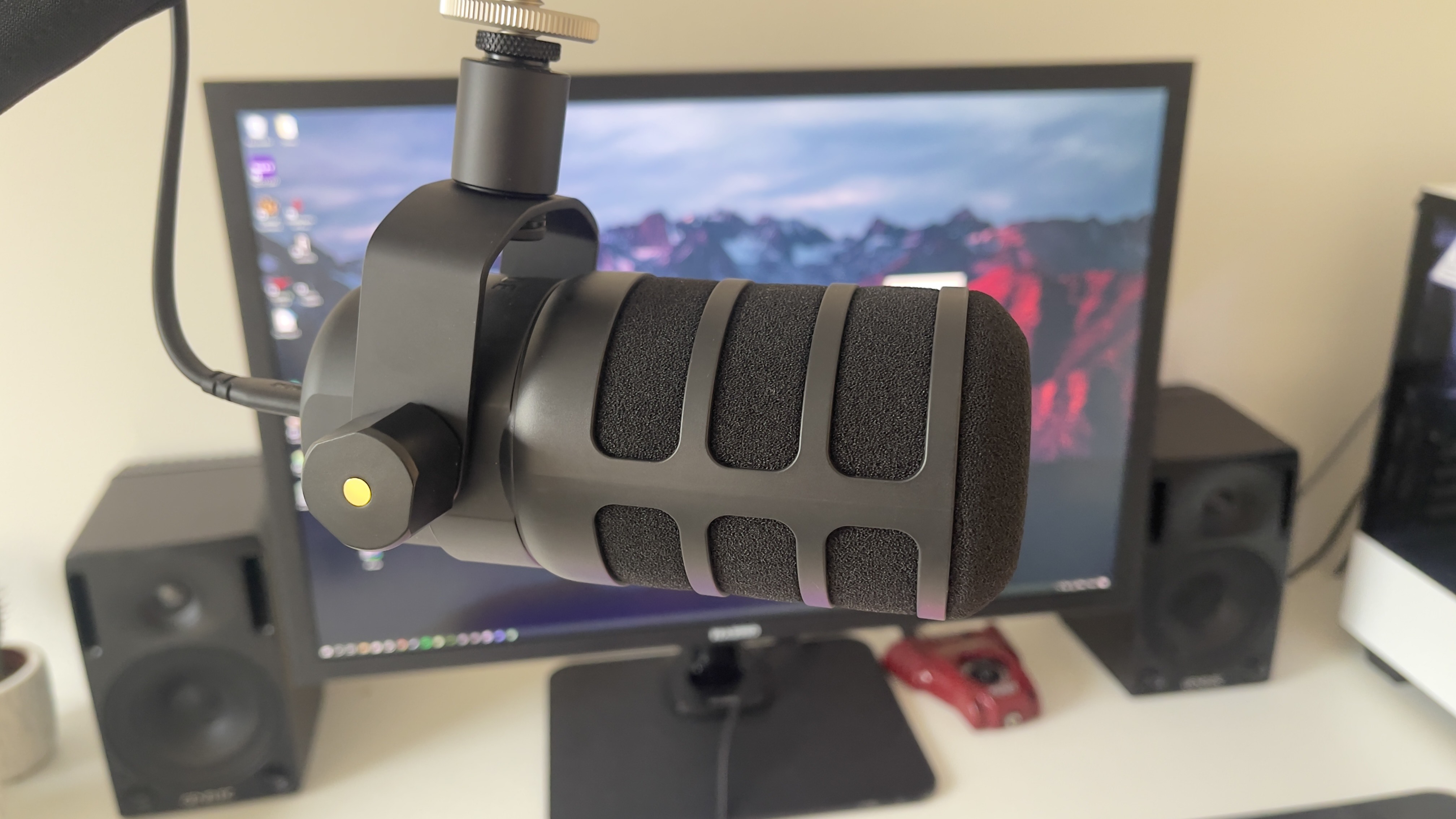
Rode PodMic USB: Price and availability
- List price: $199.99 / £199.99 / AU$329.99
- Double the price of the XLR-only model
- Tough competition like the Shure MV7 at this price point
Price is the only major downside of the PodMic USB, but it’s a considerable one. Retailing for $200 / £200 means it’s going up against spoken word mic royalty like the Shure MV7, and it doesn’t offer a standout feature or discernibly better audio quality to draw you away from the latter. The fact that the extra outlay is due to an added connection type which can’t be recorded in series means it’s unlikely that most users will feel a real sense of added value here.
Rode PodMic USB: Specs
| Price | $179.99 / £169.99 / around AU$299 |
| Polar pattern | Cardioid |
| Sample rate | 48 kHz |
| Connection type | XLR, USB-C |
| Weight | 900g / 1.9lb |
| Software | Rode Central, Rode Connect, Rode Unify |
Rode PodMic USB: Design and features
- Professional, sleek appearance
- Straightforward setup
- Direct mic monitoring input
One of the best things about this mic is its look and feel. You get the sense you’re holding studio equipment as soon as you take the capsule out of its packaging and feel its 1.9lb/900g weight. While that might not be ideal for travel, it certainly conveys a sturdiness and premium construction which remains consistent under deeper scrutiny.
Sign up for breaking news, reviews, opinion, top tech deals, and more.
Pulling away the rubber guard to reveal the XLR connection is like opening the briefcase from Pulp Fiction, so pristine and glowing are the pins and shielding. And while some mics in this space make a more explicit play for streamers by adding RGB lighting, Rode retains a sophisticated, professional studio gear aesthetic throughout.
The supplied pop shield fits snugly over the capsule and does its job well. If you’re thinking of using this as an instrument mic it’s best used without the shield, and it’s nice to see the mic’s versatility accounted for by the easy shield fixing.
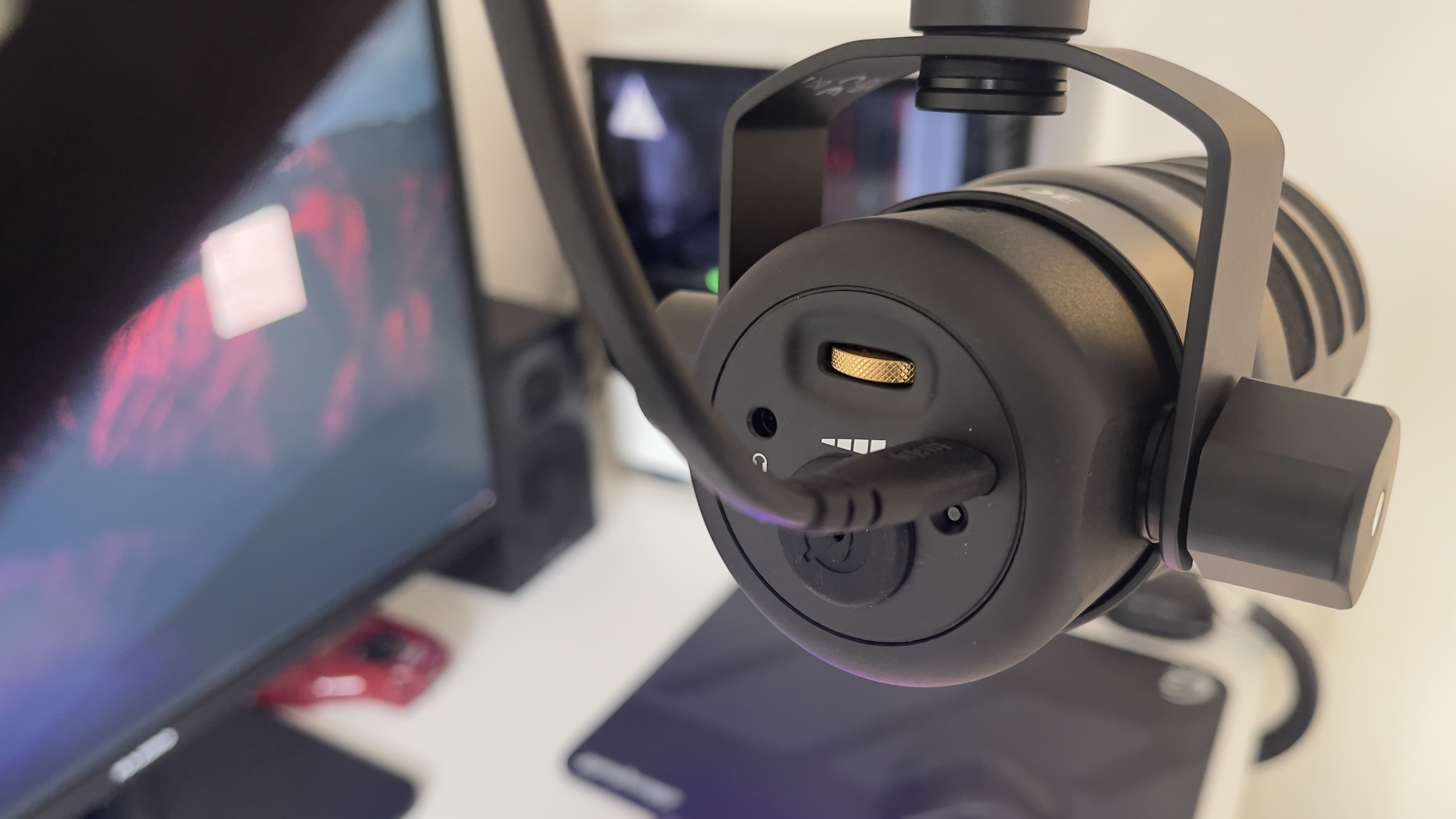
Rather than a cradle, the mic capsule mounts to an arm or stang directly via a characteristically solid hinged metal bracket. It’s easy to get the angle you need from this design, and while a supplied stand would certainly have sweetened the deal at this high pricing, one can have no qualms about how it fixes to a boom arm.
Setup via the USB-C connection couldn’t be much simpler. You run the cable directly from the USB-C connector at the base of the mic into your PC or Mac’s USB-C port via the cable provided. If you’re short on USB-C connections on your motherboard you could use a USB-C to USB-A cable instead, but that isn’t supplied with this mic.
Via XLR it’s only slightly more involved, requiring an audio interface to convert that analog XLR input into a digital signal. Connecting that way does mean you forgo the use of Rode’s Unify, Connect and Central software programs for this mic, but if fidelity must be maintained at all costs, the option’s there.
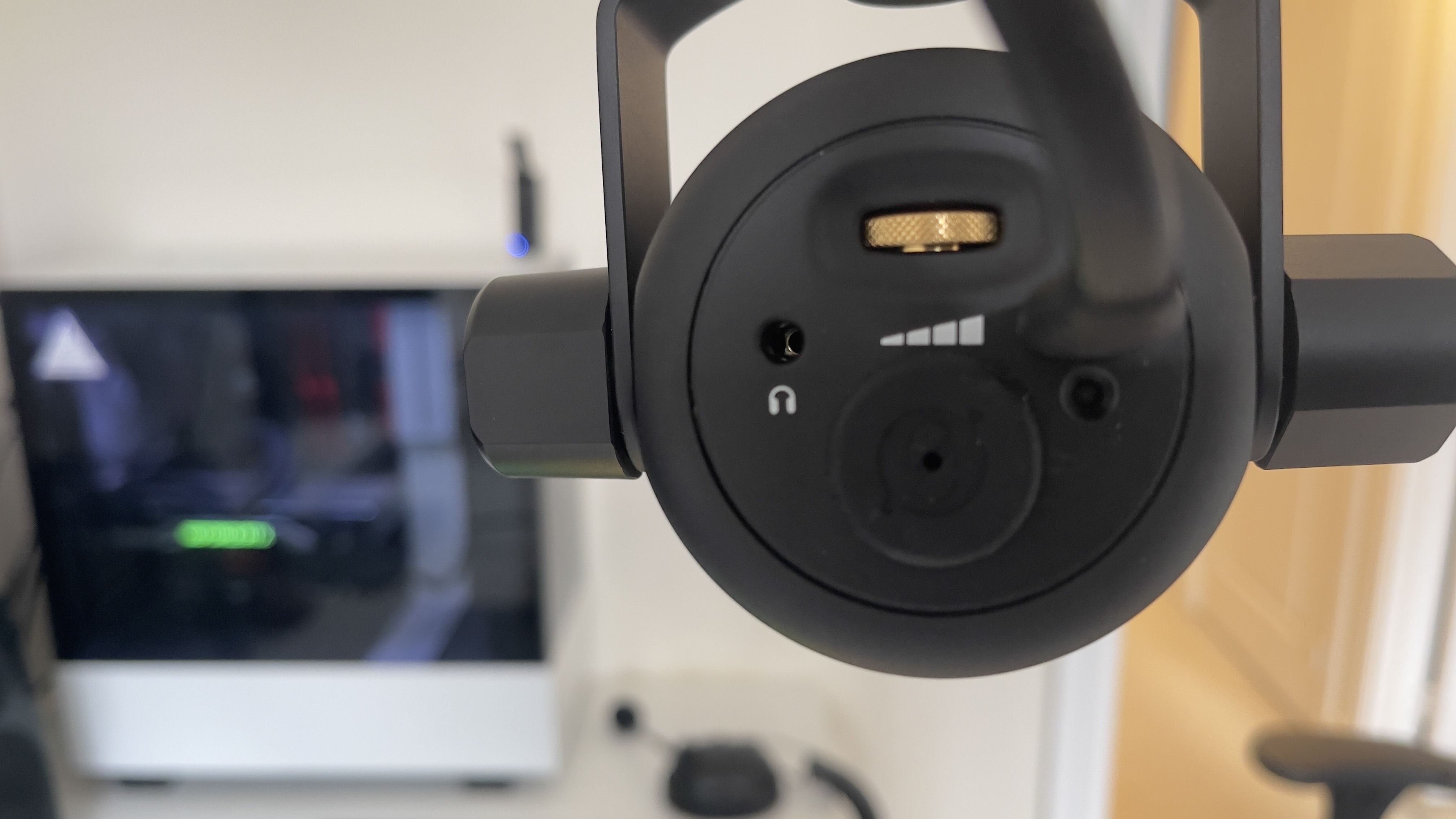
This model is particularly light on physical, on-mic controls. A scroll wheel for mic monitoring gain is the one and only control here, in fact, which shouldn’t be a dealbreaker for the vast majority of use cases but when compared to the MV7’s gain/monitoring slider and mute control, it looks a little bit barebones.
Mic monitoring sounds great, though. It’s common for these live mic monitoring signals to run hot and distort much more easily than the recording signal, but that isn’t the case here - you get a usable, representative tone.
On the software side, there are three different programs that can be used specifically with the PodMic USB when you connect via USB: Rode Central, Rode Connect, and Rode Unify. Central is the top-level companion app that gives you all your basic controls, while Connect and Unify work more like mixers. After an initial foray, I found that I didn’t end up using any of them, preferring to just work in Ableton and add plugins to sculpt the sound. I can see the value of all three, but streamers, podcasters, and producers will all probably have their preferred software without the need to dip into these.
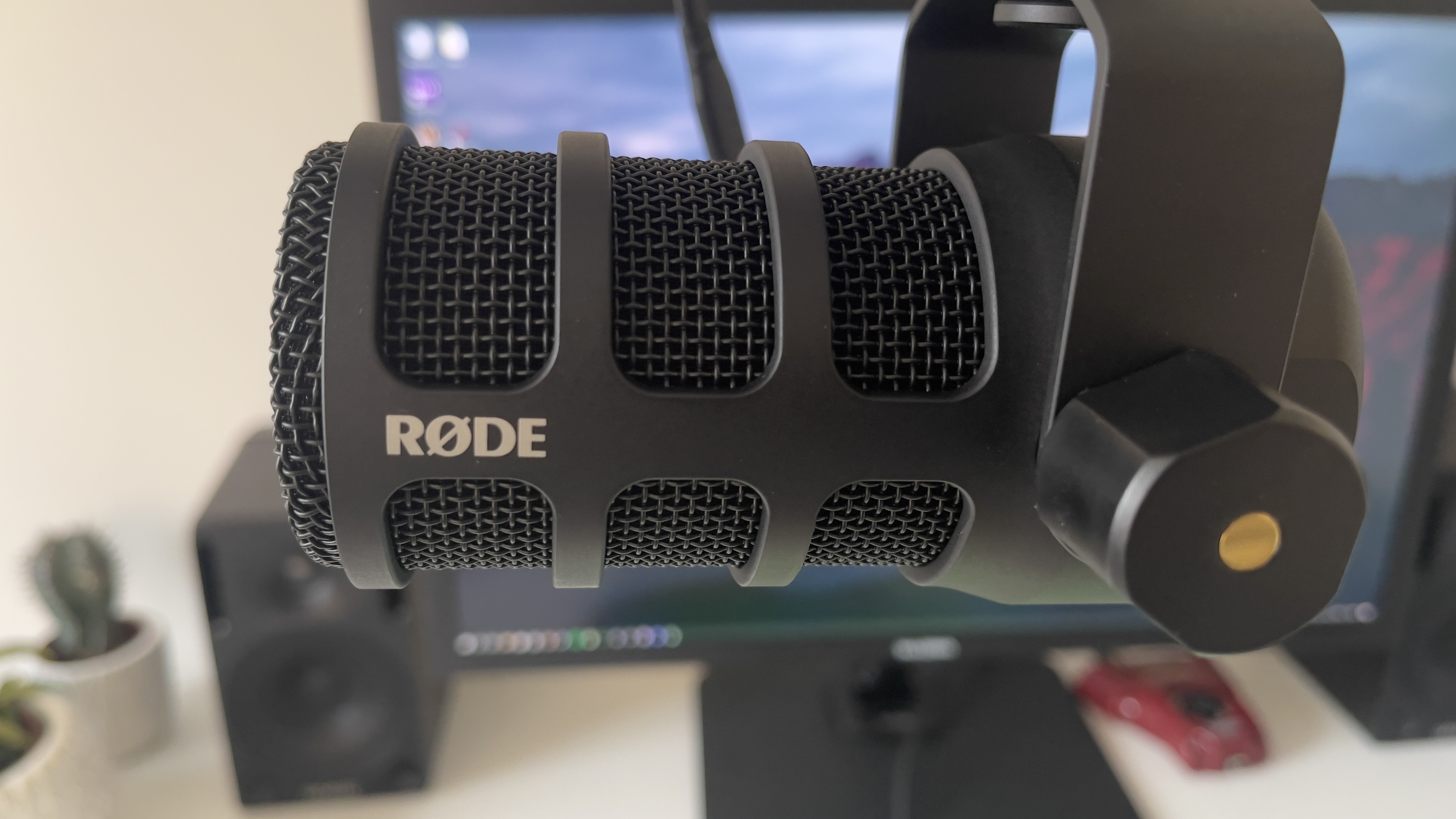
Rode PodMic USB: Performance
- Warm, full and a bit mid-focused
- Decent guitar amp recording
- Deals with ambient noise and knocks well
Rode’s name is hallowed in pro audio, so the fundamental sound of this mic was never going to be called into question. With the original PodMic having done the rounds for over five years now too, this is a known quantity for sound quality.
However, sound quality is a blend of science and perception. There are specs involved, like the 48KHz sample rate via USB-C which can’t be debated, but there’s also the way its sound reproduction hits your ear. I found the PodMic USB lacks a little of the sparkle I look for from a vocal mic, at least out of the box.
With some EQ and low pass, I can dial in that whispery, grainy high-end that makes podcasts, streams, and voiceover tracks sound glossy and broadcast-ready, so it’s not that the mic lacks fidelity. Far from it. It captures a lot of warmth and detail from a vocal source. It’s just that its natural tuning seems to emphasize midrange more than I’m used to, so I feel like dialing it back at the DAW level. That’s true when connecting via an XLR cable, or by USB-C.
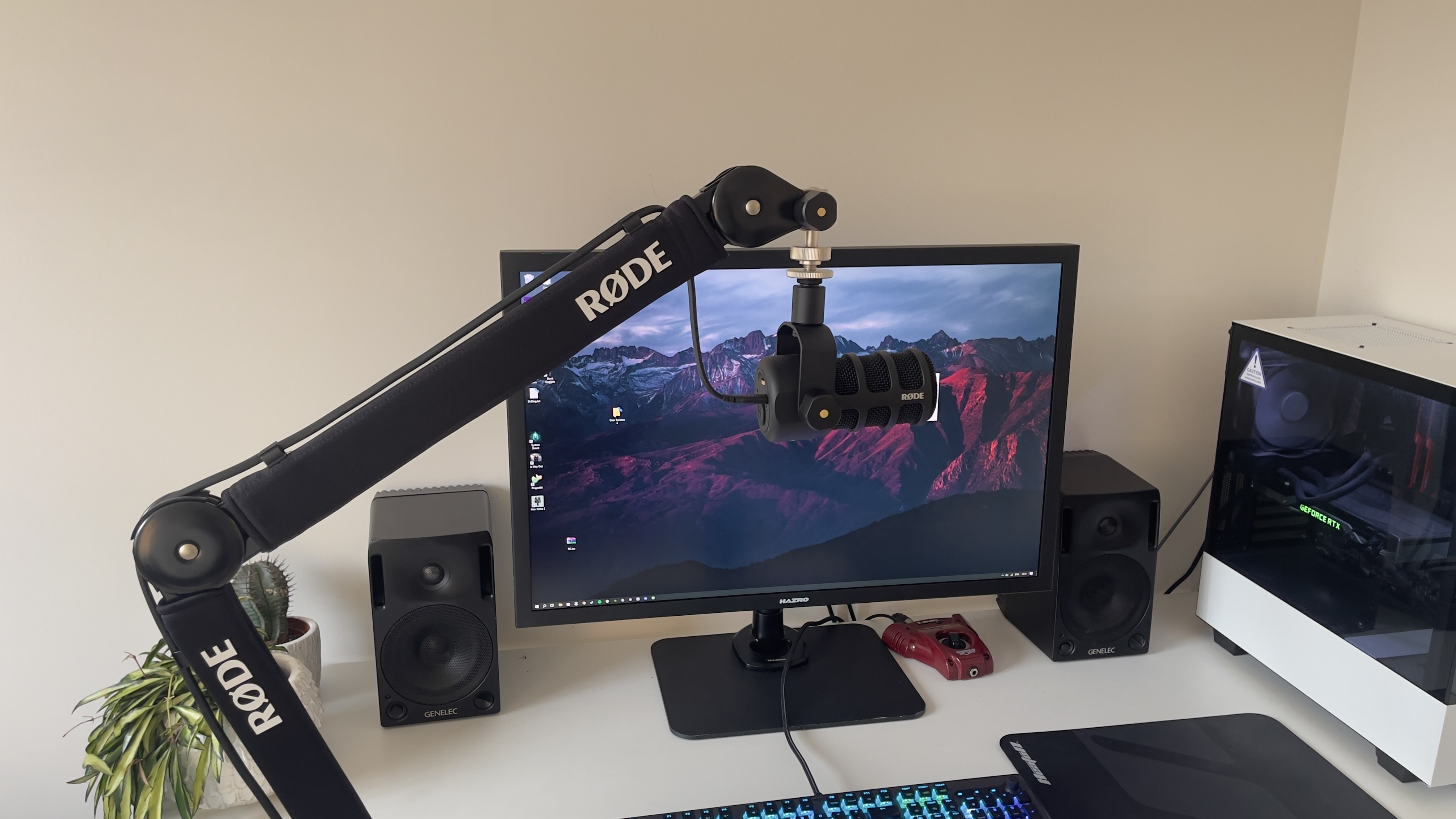
It’s the same sound characteristic story when you put this mic in front of a guitar amp speaker, although I found in this scenario the mid-emphasis works better. It’s particularly well-suited to my Mesa 2X12 closed-back cabinet - it seems to reproduce that tight, dry sound particularly well.
A decade ago, vocals and instrument recordings at this fidelity for $200 / $200 - via USB, no less - would have been dreamland. How far we’ve come…
In a less studio-y environment like Discord or Twitch streaming where mechanical keyboards are clacking away and desk knocks are commonplace, the PodMic USB stands up well to audio intrusions. Its cardioid polar pattern tunes out keyboard noise if it’s placed so that the keyboard’s behind it, and using the supplied shock mount it suppresses knocks admirably.
Should I buy the Rode Podmic USB?
Buy it if...
You loved the original PodMic but want a simpler setup
No need for audio interfaces with this version - just hook it up via USB and start recording.
You record vocals and instruments
Guitar amp recordings turn out particularly well through this robust cardioid capsule.
You like a lot of midrange
The mids are emphasized in this model, so if you prefer a warm vocal sound this is worth investigating.
Don't buy it if...
Having two connection types isn’t a big deal
Retaining the original XLR input and adding USB has doubled the PodMic’s original pricing - if you don’t need both, opt for the original XLR model.
You want to record multiple speakers at once
The PodMic USB’s cardioid polar pattern is great at picking up one source, but it’s not suited to a room of podcasters speaking at once.
You don’t own a boom arm
No stand or arm is supplied with this mic, so if you don’t have additional budget to buy one you should consider another option.
Also consider...
Still not fully sold on the Rode PodMic USB? Here are two other strong gaming microphones to consider.
| Row 0 - Cell 0 | Rode Podmic USB | SteelSeries Alias | Audio-Technica AT2040USB |
| Price | £199.99 / $199.99 / AU$329.99 | $179.99 / £179.99 / AU$399 | £129.99 (around $167.32 / AU$255.50) |
| Polar pattern | Cardioid | Cardioid | Hypercardioid |
| Sample rate | 48 kHz | 48KHz | 44.1 kHz/48 kHz/88.2 kHz/96 kHz |
| Connection type | USB-C, XLR | USB | USB-C |
| Weight | 900 g / 1.9 lb | 750 g / 1.65 lb | 600 g / 1.3 lb |
| Software | Rode Central, Connect & Unify | Sonar | N/A |
SteelSeries Alias
A little more inspired by the gaming world, featuring a striking aesthetic and similarly great out-of-the-box audio.
For more information read our full SteelSeries Alias review.
Audio-Technica AT2040USB
A little more specialized for vocals thanks to its hypercardioid polar pattern, and produces lovely, creamy spoken word recordings.
For more information read our full Audio-Technica AT2040USB review.
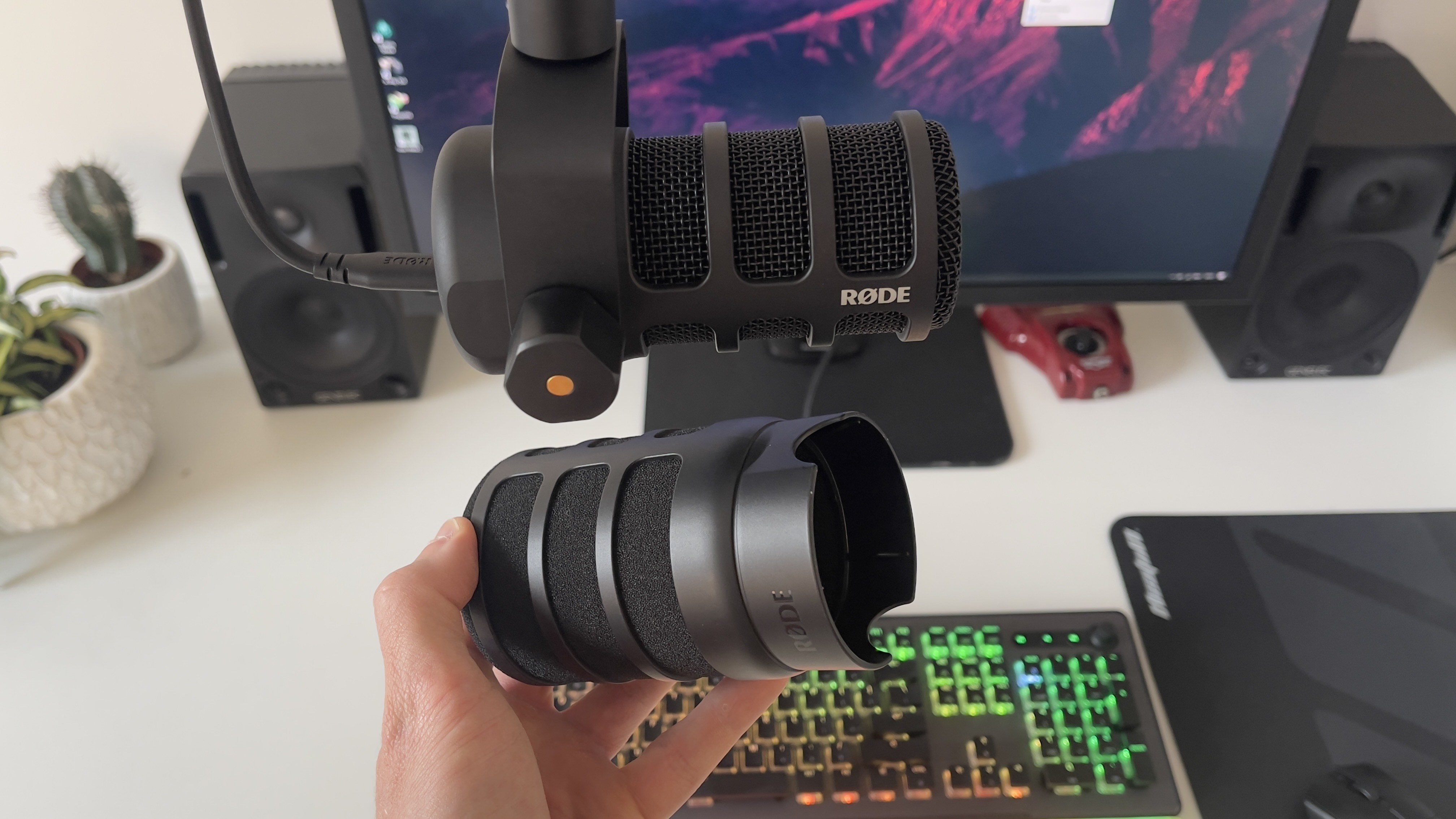
How I tested the Rode PodMic USB
- Two weeks of professional and personal use
- Used for in-game comms, Discord chat, and as an instrument mic
- Both inputs tested
The PodMic has been my daily driver in online games, Discord chitchat, and recording voiceover tracks for YouTube for two straight weeks. In addition, I set it up on a stand in front of my guitar amp’s speaker cone and recorded some instrument audio. For both vocal and instrumental recordings, I ran an XLR signal through a Focusrite audio interface into Ableton.
First reviewed August 2024.

Ad creative by day, wandering mystic of 90s gaming folklore by moonlight, freelance contributor Phil started writing about games during the late Byzantine Empire era. Since then he’s picked up bylines for The Guardian, Rolling Stone, IGN, USA Today, Eurogamer, PC Gamer, VG247, Edge, Gazetta Dello Sport, Computerbild, Rock Paper Shotgun, Official PlayStation Magazine, Official Xbox Magaine, CVG, Games Master, TrustedReviews, Green Man Gaming, and a few others but he doesn’t want to bore you with too many. Won a GMA once.
